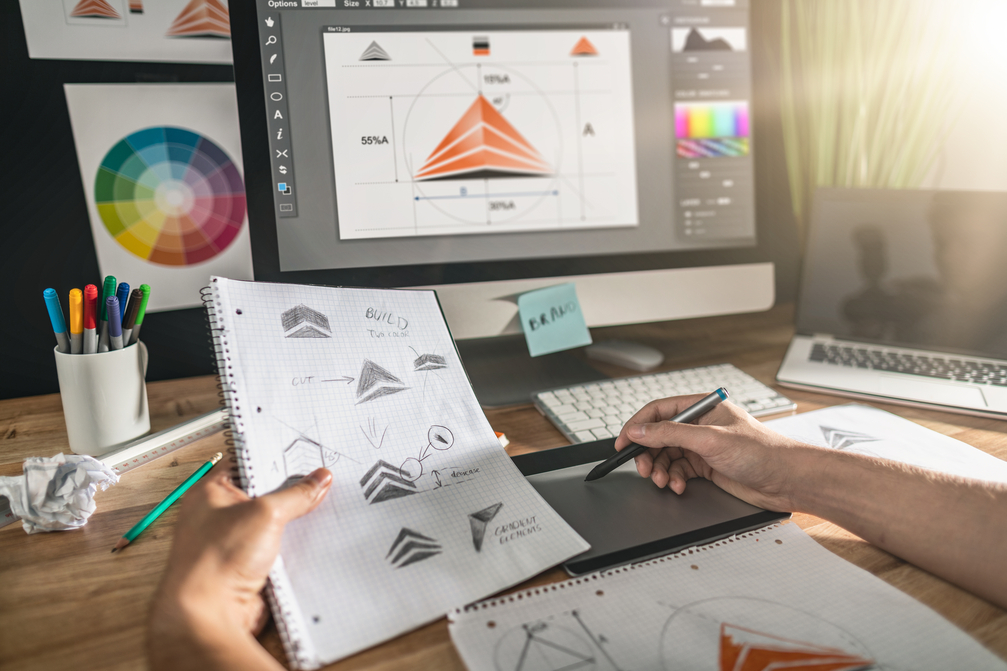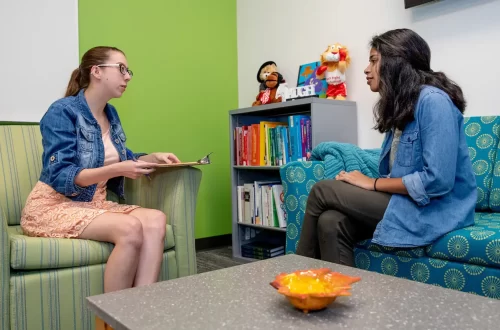Learning graphic design in today’s digital age is an exciting and rewarding journey, opening doors to careers in branding, web design, advertising, and much more. While a formal degree can be beneficial, it’s entirely possible to build strong graphic design skills through self-study, online courses, and hands-on practice. Here’s a 7-step roadmap to guide your learning process:
1. Understand the Fundamentals of Design
Before diving into software, grasp the core principles that underpin all good design. This foundational knowledge will elevate your work from mere decoration to effective communication.
- Elements of Design: Learn about line, shape, form, space, colour, texture, and typography.
- Principles of Design: Understand how to apply balance, contrast, emphasis, movement, pattern, rhythm, unity, and variety.
- Colour Theory: Explore colour wheels, colour harmonies (complementary, analogous, triadic), and the psychology of colour.
- Typography: Learn about typefaces (serif, sans-serif, script), font pairing, kerning, leading, tracking, and how typography impacts readability and mood.
- Layout and Composition: Understand grid systems, visual hierarchy, proximity, and alignment to create organized and appealing designs.
2. Master Essential Graphic Design Software
Proficiency in industry-standard software is non-negotiable. Focus on the Adobe Creative Suite, which dominates the professional landscape.
- Adobe Photoshop: For image manipulation, photo editing, compositing, and raster-based artwork.
- Adobe Illustrator: For vector graphics, logos, illustrations, icons, and scalable artwork that won’t pixelate.
- Adobe InDesign: For layout and desktop publishing, ideal for brochures, magazines, books, and interactive PDFs.
How to Learn:
- Official Adobe Tutorials: Adobe provides comprehensive tutorials for all its software.
- YouTube: Countless free tutorials for specific tools and techniques.
- Online Courses: Platforms like Udemy, Coursera, Skillshare, and LinkedIn Learning offer structured courses (many paid, some free trials) that guide you from beginner to advanced.
- Practice Projects: The best way to learn is by doing. Try recreating designs, following along with tutorials, and experimenting with tools.
3. Learn to Draw (Even a Little Bit)
While not strictly mandatory for all graphic design roles, basic drawing skills significantly enhance your ability to conceptualize and visualize ideas. It helps in sketching out initial concepts before moving to digital tools.
- Benefits: Improves understanding of form, perspective, and composition. Enhances visual problem-solving.
- How to Start: Practice sketching simple objects, learn basic perspective, and experiment with different drawing tools. Focus on expressing ideas quickly rather than creating perfect art.
- Resources: Free online drawing lessons, YouTube channels dedicated to drawing fundamentals.
4. Understand Branding and Marketing Fundamentals
Graphic design is largely about visual communication in a commercial context. A basic understanding of branding, marketing, and audience psychology will make you a more effective designer.
- Branding: Learn about brand identity, brand guidelines, target audience, and how design communicates a brand’s message.
- Marketing Principles: Understand how design supports marketing goals, whether it’s for advertising, social media campaigns, or website conversions.
- User Experience (UX) & User Interface (UI) Basics: If you’re interested in web or app design, learn how design impacts user interaction and usability.
5. Build a Strong Portfolio
Your portfolio is your resume as a graphic designer. It showcases your skills, style, and problem-solving abilities.
- Start Small: Begin with personal projects, redesigns of existing brands, or conceptual work.
- Variety is Key: Include a range of projects (logos, posters, web mock-ups, social media graphics) to demonstrate versatility.
- Quality over Quantity: Only include your best work.
- Case Studies: For each project, briefly explain the problem, your design process, and the solution.
- Online Platforms: Use platforms like Behance, Dribbble, or create your own simple website.
6. Seek Feedback and Iterate
Design is an iterative process. Constructive criticism is invaluable for growth.
- Join Design Communities: Online forums (e.g., Reddit’s r/graphic_design), Discord servers, or local meetups.
- Ask for Critiques: Share your work and be open to feedback. Learn to differentiate between personal preference and valid design critique.
- Iterate: Use feedback to refine your designs and improve your skills.
7. Stay Updated and Keep Learning
The design world constantly evolves with new trends, tools, and technologies.
- Follow Design Blogs and Publications: Stay informed about industry news and emerging styles.
- Experiment with New Tools: Keep an eye on new software or features.
- Never Stop Practicing: Take on new projects, challenge yourself, and continuously refine your skills.
Learning graphic design is a journey, not a destination. By systematically working through these steps, practicing consistently, and embracing a mindset of continuous learning, you’ll build a strong foundation and develop the skills needed to succeed in this exciting creative field.





